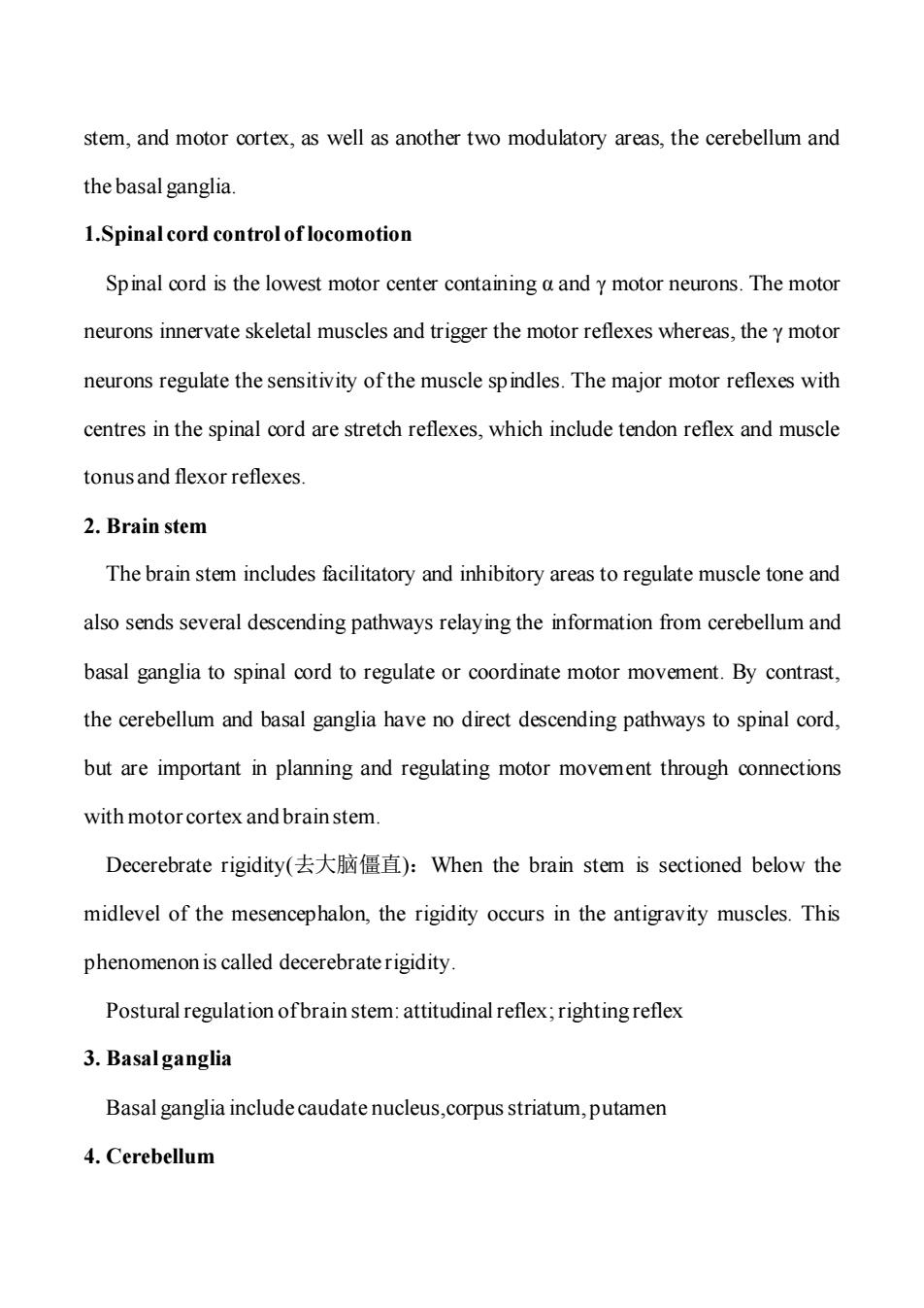正在加载图片...

stem,and motor cortex,as well as another two modulatory areas,the cerebellum and the basal ganglia. 1.Spinal cord control oflocomotion Spinal cord is the lowest motor center containing a and y motor neurons.The motor neurons innervate skeletal muscles and trigger the motor reflexes whereas,the y motor neurons regulate the sensitivity of the muscle spindles.The major motor reflexes with centres in the spinal cord are stretch reflexes,which include tendon reflex and muscle tonus and flexor reflexes. 2.Brain stem The brain stem includes facilitatory and inhibitory areas to regulate muscle tone and also sends several descending pathways relaying the information from cerebellum and basal ganglia to spinal cord to regulate or coordinate motor movement.By contrast, the cerebellum and basal ganglia have no direct descending pathways to spinal cord, but are important in planning and regulating motor movement through connections with motor cortex and brain stem Decerebrate rigidity(去大脑僵直):When the brain stem is sectioned below the midlevel of the mesencephalon,the rigidity occurs in the antigravity muscles.This phenomenon is called decerebrate rigidity. Postural regulation ofbrain stem:attitudinal reflex;righting reflex 3.Basal ganglia Basal ganglia include caudate nucleus,corpus striatum,putamen 4.Cerebellumstem, and motor cortex, as well as another two modulatory areas, the cerebellum and the basal ganglia. 1.Spinal cord control of locomotion Spinal cord is the lowest motor center containing α and γ motor neurons. The motor neurons innervate skeletal muscles and trigger the motor reflexes whereas, the γ motor neurons regulate the sensitivity of the muscle spindles. The major motor reflexes with centres in the spinal cord are stretch reflexes, which include tendon reflex and muscle tonus and flexor reflexes. 2. Brain stem The brain stem includes facilitatory and inhibitory areas to regulate muscle tone and also sends several descending pathways relaying the information from cerebellum and basal ganglia to spinal cord to regulate or coordinate motor movement. By contrast, the cerebellum and basal ganglia have no direct descending pathways to spinal cord, but are important in planning and regulating motor movement through connections with motor cortex and brain stem. Decerebrate rigidity(去大脑僵直):When the brain stem is sectioned below the midlevel of the mesencephalon, the rigidity occurs in the antigravity muscles. This phenomenon is called decerebrate rigidity. Postural regulation of brain stem: attitudinal reflex; righting reflex 3. Basal ganglia Basal ganglia include caudate nucleus,corpus striatum, putamen 4. Cerebellum